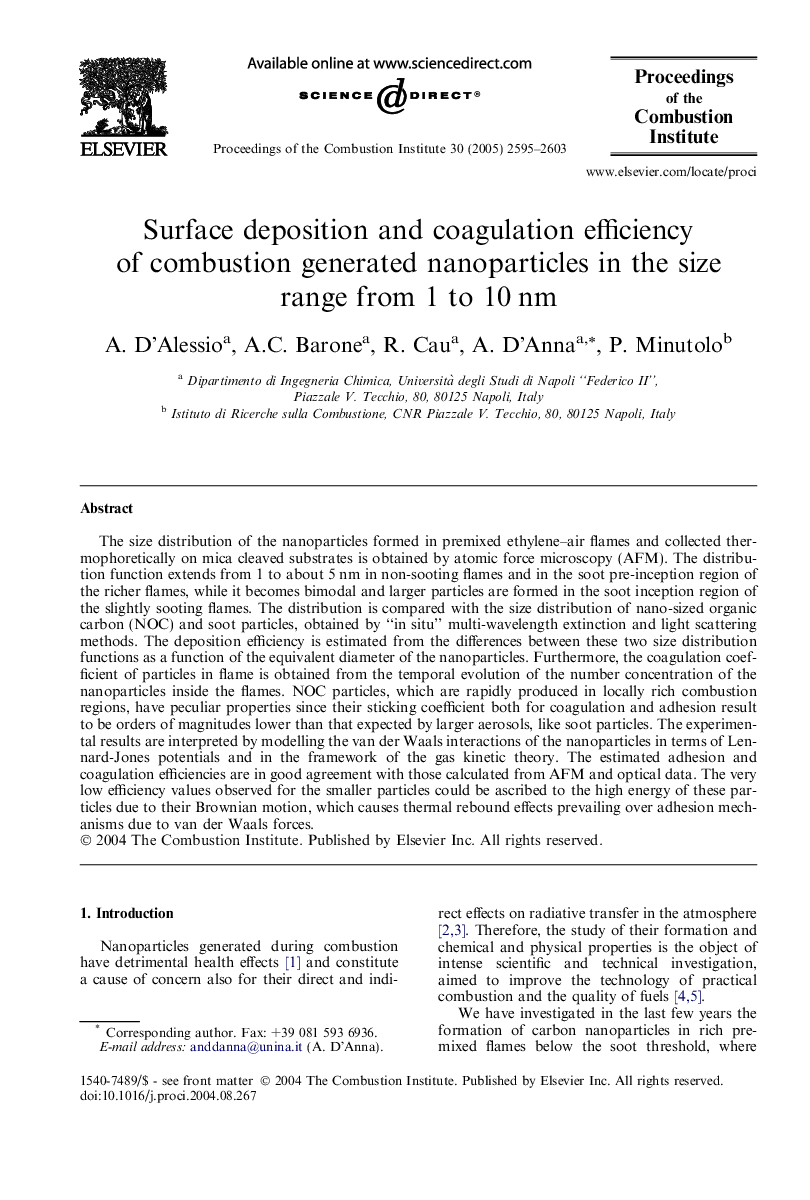| کد مقاله | کد نشریه | سال انتشار | مقاله انگلیسی | نسخه تمام متن |
|---|---|---|---|---|
| 241008 | 1427930 | 2005 | 9 صفحه PDF | دانلود رایگان |

The size distribution of the nanoparticles formed in premixed ethylene–air flames and collected thermophoretically on mica cleaved substrates is obtained by atomic force microscopy (AFM). The distribution function extends from 1 to about 5 nm in non-sooting flames and in the soot pre-inception region of the richer flames, while it becomes bimodal and larger particles are formed in the soot inception region of the slightly sooting flames. The distribution is compared with the size distribution of nano-sized organic carbon (NOC) and soot particles, obtained by “in situ” multi-wavelength extinction and light scattering methods. The deposition efficiency is estimated from the differences between these two size distribution functions as a function of the equivalent diameter of the nanoparticles. Furthermore, the coagulation coefficient of particles in flame is obtained from the temporal evolution of the number concentration of the nanoparticles inside the flames. NOC particles, which are rapidly produced in locally rich combustion regions, have peculiar properties since their sticking coefficient both for coagulation and adhesion result to be orders of magnitudes lower than that expected by larger aerosols, like soot particles. The experimental results are interpreted by modelling the van der Waals interactions of the nanoparticles in terms of Lennard-Jones potentials and in the framework of the gas kinetic theory. The estimated adhesion and coagulation efficiencies are in good agreement with those calculated from AFM and optical data. The very low efficiency values observed for the smaller particles could be ascribed to the high energy of these particles due to their Brownian motion, which causes thermal rebound effects prevailing over adhesion mechanisms due to van der Waals forces.
Journal: Proceedings of the Combustion Institute - Volume 30, Issue 2, January 2005, Pages 2595–2603